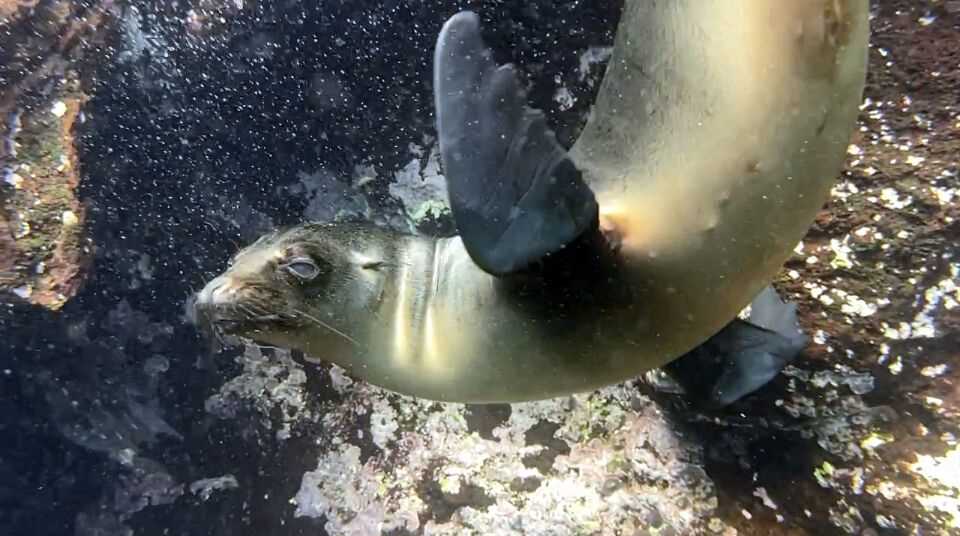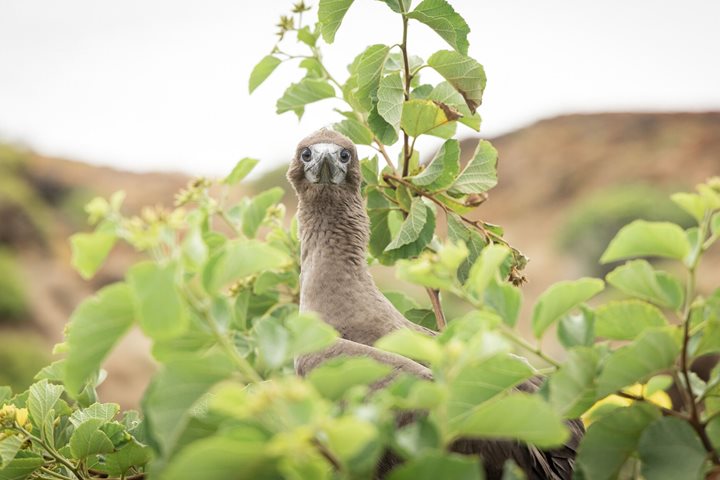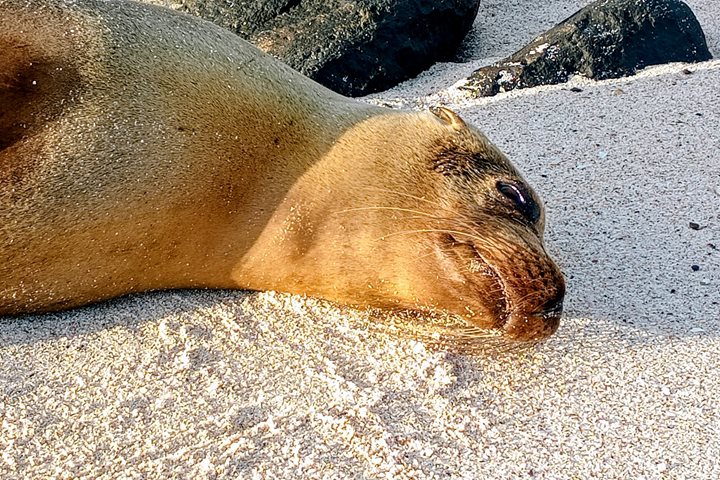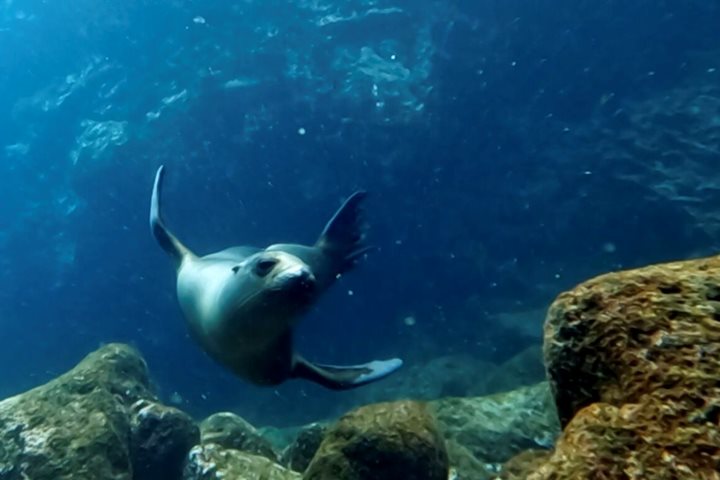Floreana was considered the first political capital of the Galapagos when, back in 1832, the first president of the Republic of Ecuador, General Juan José Flores decided to take possession of the archipelago and named this island in his honor. Before this important historical event, famous visitors treated Floreana as a crucial stop for resupplying water and food in the form of giant tortoises. Important events took place on Floreana, particularly during the War of 1812 between the U.S. and the United Kingdom. The island may have also inspired the events of the novel Moby Dick. In the late 1820s. the whaling ship Essex from Nantucket (Massachusetts) visited Floreana and a few days later was destroyed by a giant sperm whale.
After a long navigation from Santa Cruz Island, we arrived to Floreana. Our activities began early in the morning as we boarded Zodiacs for the calm waters of Post Office Bay where we did some kayaking along the shallows covered with mangroves. On the trees, we spotted some pelicans, frigatebirds, and lava herons. In the ocean, sea turtles, rays, sea lions, and many colorful fish swam very close to our guests. The gentle sea breeze cooled the atmosphere, but little by little the sun began to appear through the clouds, warming the atmosphere a little and illuminating the island that, until then, looked cloudy. We were able to appreciate the geology of the place. Some of the hills and mountains now covered with green vegetation were once volcanoes.
After kayaking, we headed towards the landing beach to visit Post Office Bay and its historic wooden barrel, considered the oldest mail system of the Eastern Pacific. For hundreds of years, letters were dropped into the barrel by sailors, merchants, explorers, buccaneers, pirates, and the early visitors to the archipelago. To continue the hand-delivery method, our guests dropped off their postcards and took some to hand deliver when they get back home.
After breakfast, we arrived at Champion Islet to discover the incredible underwater world that surrounds not only Floreana but also the neighboring islets. While snorkeling, we observed a huge school of black-stripped salemas, sea turtles, colorful fish, rays, and some playful sea lions.
At 3:45 p.m. we boarded Zodiacs heading for Punta Cormorant beach. The sand looked dark green, a result of the high concentration of olivine, a mineral abundant in the area. Behind the beach was a lagoon where we spotted more than 80 flamingos. Some of them walked along the shallows feeding of crustaceans or algae, while others, at the distance, nested on conical nests made of mud.
Walking along the beach, we found several blue-footed boobies nesting, incubating their eggs, or feeding their chicks. Next, we walked inland to arrive at the second beach that was completely white, mostly the result of the erosion of coral and organic material. We walked along this beach, and we observed some baby turtles abandoning their nests and some adults swimming and showing us their heads out waiting for the darkness of the night, to begin their long task of nesting in the highest part of the beach. Very close to us, we were also able to observe some white-tipped reef sharks and many stingrays.
Just before sunset, some guests took a dip in the water to cool off a bit after a sunny and warm day. We then made our way back to National Geographic Islander II somewhat tired but happy. Today was a spectacular day with creatures whose innocence captivated our hearts forever.







